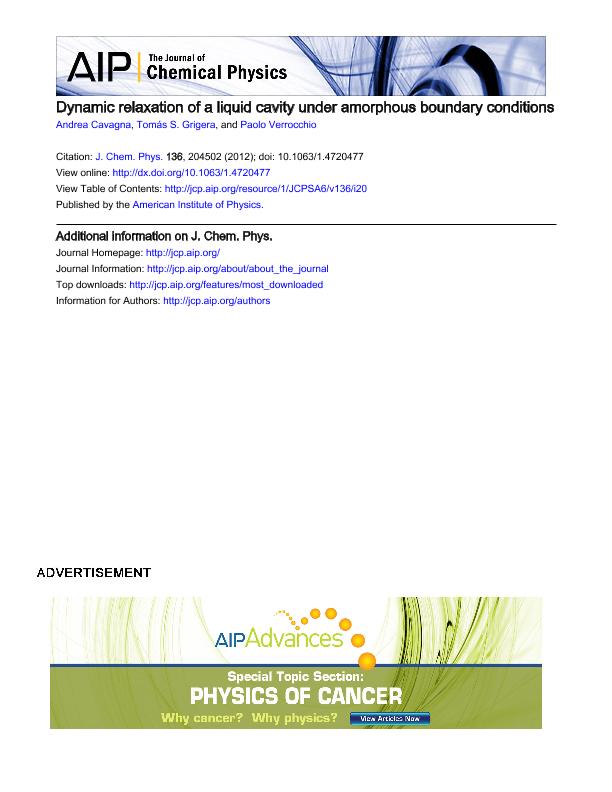Artículo
Dynamic relaxation of a liquid cavity under amorphous boundary conditions
Fecha de publicación:
24/05/2012
Editorial:
American Institute of Physics
Revista:
Journal of Chemical Physics
ISSN:
0021-9606
Idioma:
Inglés
Tipo de recurso:
Artículo publicado
Clasificación temática:
Resumen
The growth of cooperatively rearranging regions was invoked long ago by Adam and Gibbs to explain the slowing down of glass-forming liquids. The lack of knowledge about the nature of the growing order, though, complicates the definition of an appropriate correlation function. One option is the point-to-set (PTS) correlation function, which measures the spatial span of the influence of amorphous boundary conditions on a confined system. By using a swap Monte Carlo algorithm we measure the equilibration time of a liquid droplet bounded by amorphous boundary conditions in a model glass-former at low temperature, and we show that the cavity relaxation time increases with the size of the droplet, saturating to the bulk value when the droplet outgrows the point-to-set correlation length. This fact supports the idea that the point-to-set correlation length is the natural size of the cooperatively rearranging regions. On the other hand, the cavity relaxation time computed by a standard, nonswap dynamics, has the opposite behavior, showing a very steep increase when the cavity size is decreased. We try to reconcile this difference by discussing the possible hybridization between mode-coupling theory and activated processes, and by introducing a new kind of amorphous boundary conditions, inspired by the concept of frozen external state as an alternative to the commonly used frozen external configuration.
Palabras clave:
Liquid
,
Amorphous Boundary Conditions
,
Glassformer
Archivos asociados
Licencia
Identificadores
Colecciones
Articulos(INIFTA)
Articulos de INST.DE INV.FISICOQUIMICAS TEORICAS Y APLIC.
Articulos de INST.DE INV.FISICOQUIMICAS TEORICAS Y APLIC.
Citación
Cavagna, A.; Grigera, Tomas Sebastian; Verrocchio, Paolo; Dynamic relaxation of a liquid cavity under amorphous boundary conditions; American Institute of Physics; Journal of Chemical Physics; 136; 20; 24-5-2012; 1-16; 204502
Compartir
Altmétricas




